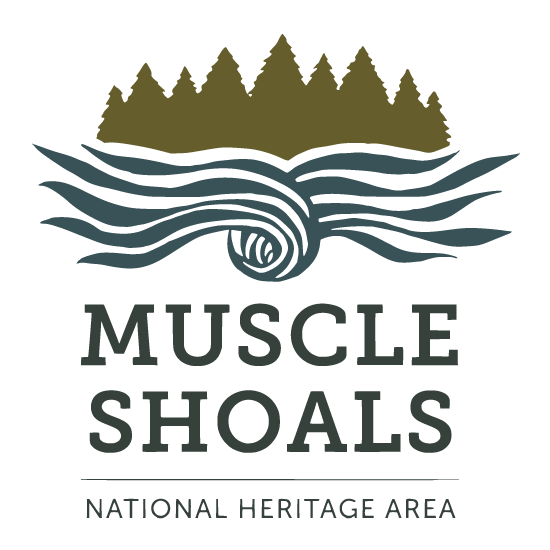How to Read the Newspaper Articles
The articles that are presented on this website appear exactly how they did in The Florence Times and The Tri-Cities Daily between the years 1945-1975. This means that the information being presented is a primary source.
When viewing a primary source, there are a few questions that you want to consider. These questions enable you to think from the perspective of a historian in order to interpret, understand, and conclude an article’s meaning.
1) When was this article written?
It is important to recognize the publishing date of an article. This allows you to understand the period of time that the article was written in. Additional questions to consider would be: What important events were happening during this month and year? Could the events that occurred during this period impact the perspective this article is written from? Could the writers’ or editors’ opinions on larger ideas during this period influence their language in the article?
2) Why was this article written?
Discovering the purpose behind an article can help you further interpret what it means historically. It is important to consider what information the article is conveying and why that would be significant to the readers who the writers are ultimately writing for. Additional questions to consider would be: Are the readers looking for specific information? Are the writers and editors catering to their audience? Or, are they providing information the contradicts the typical worldviews within the community?
3) Where does the article pertain to?
The articles that are published in these newspapers do not always depict events that occurred in the Shoals area. The articles included may outline events that happened in another area of the state of Alabama, in another area of the United States, or in another area of the world. It is important to recognize the area being discussed in the article in order to further understand its significance. Additional questions to consider would be: Why would this event be important to Florence or to the Shoals? What does this event convey about the state of Alabama or about the country?
4) Who is the article written for?
This question is similar to the Why? question earlier on, but it reiterates the importance of recognizing the audience and the readership of these newspapers. It is important to consider who was likely to read the articles because this can influence the writers’ and editors’ decisions to include specific information. The recognition of readership can also convey why specific language was used and how the information in the article is depicted. Additional questions to consider would be: Was this article written for a primarily white or Black audience? How could this difference in readership impact the language utilized within the article?
5) What is this article discussing?
Finally, it is important to figure out exactly what the writer is attempting to convey to the reader. The article will have a specific subject, and it is helpful to recognize what that subject is in order to fully understand the purpose of the article. Additional questions to consider would be: Is there a clear event outlined in the title of the article? What or who is being discussed within the article?
These questions can help you break down an article’s meaning. By contemplating and answering these questions, you will be able to form your own opinion about the article’s purpose and the message it conveys. As you research information, read primary sources, interpret the articles, understand their meaning, and draw conclusions, you are becoming a historian and putting your history skills to work!
Allie Grace Roberts
Linked Resources

Trenholm High School Collection
The Trenholm High School collection contains objects representing Trenholm High School, which served over 90 years as a center of culture, recreation, and education for African Americans in the Shoals area of northern Alabama.
Trenholm High school recieved it’s name in 1921, in honor of the educator George Washington Trenholm (1872-1926). G. W. Trenholm was the principal of the school – then called the Tuscumbia Colored School – from 1896 through 1916, later moving on to become the president of Alabama State University. In the fall of 1966, Trenholm High School students began transferring to nearby Deshler High School as part of Tuscumbia’s desegregation plan; the school was closed in 1969 and the buildings subsequently torn down. At AAMU, we are proud to preserve an important part of Trenholm legacy, and to share a digital collection of Trenholm Wildcats memorabilia with the local community and world at large.
Courtesy of Alabama A&M University Digital Archives.

Renewing Inequality: Urban Renewal, Family Displacements and Race, 1950-1966
American Panorama is created by the Digital Scholarship Lab at the University of Richmond. Robert K. Nelson and Edward L. Ayers serve as editors. Justin Madron manages the project’s spatial data. Nathaniel Ayers leads the design work. Scott Nesbit served as associate editor until 2017. American Panorama is an historical atlas of the United States for the twenty-first century. It combines cutting-edge research with innovative interactive mapping techniques, designed to appeal to anyone with an interest in American history or a love of maps.
Digital Scholarship Lab, “Renewing Inequality,” American Panorama, ed. Robert K. Nelson and Edward L. Ayers, accessed February 26, 2020, https://dsl.richmond.edu/panorama/renewal/#view=0/0/1&viz=cartogram.

A More Inclusive Era at UNA
Welcome to A More Inclusive Era at UNA Project. This digital tour is an ongoing partnership project between the University of North Alabama, the Muscle Shoals National Heritage Area, and the Florence Historical Board. Explore Early History in Florence 1855-1865, Jim Crow and Legalized Segregation, Integration at UNA 1963-1975, and the Story of Wendell Wilkie Gunn – the first African American student to de-segregate the University of North Alabama in 1963.
Tennessee Valley Historical Society/University of North Alabama
Oral History Interviews
In the fall of 2012 the Tennessee Valley Historical Society and the Public History program University of North Alabama launched a collaborative oral history project to help to tell the stories of people across the Shoals area and to record the their histories for future generations. The interviews with Anita Cobb, Col. Arthur D. Graves, Dr. Felice Green, Wendall Wilkie Gunn, and Louise Hyler each touch on Civil Rights in the Shoals.